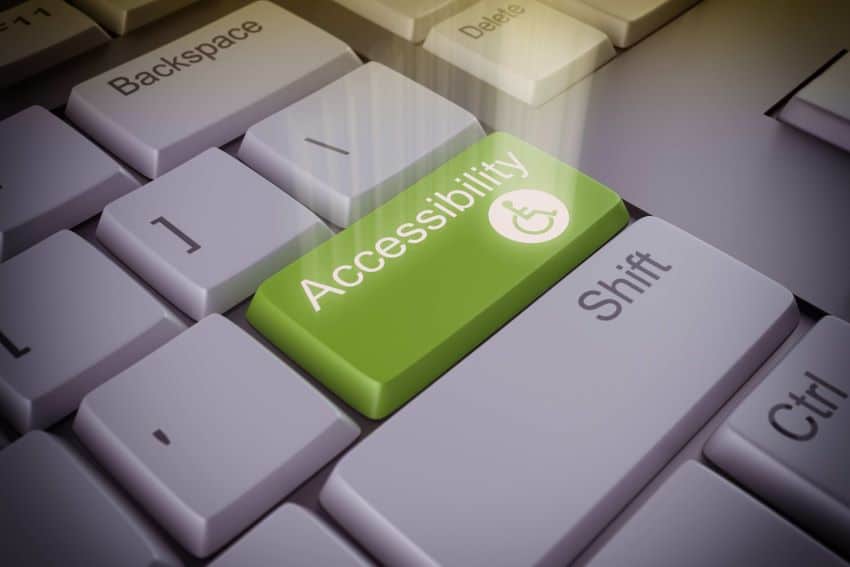In today’s interconnected world, the internet has become a vital platform for accessing essential information and services. From healthcare services and government support initiatives to educational resources and employment opportunities, the online realm encompasses a wide array of crucial details. However, it is important to acknowledge that individuals with specific disabilities that prevent them from accessing the internet may face significant challenges and potential exclusion from these valuable resources.
Without internet access, individuals with disabilities may miss out on updates, opportunities, and information that could impact their well-being and quality of life. Bridging the digital divide and ensuring equal access to the internet is imperative to prevent further marginalization and promote inclusivity in an increasingly digital society. Hence, there is a need to incorporate accessibility features in websites and online platforms, preferably at the design stage.
Web accessibility refers to the design and development of websites and online content that can be accessed and used by individuals with disabilities. It aims to remove barriers and provide equal access to information, functionality, and interaction for all users, regardless of their physical, sensory, or cognitive limitations, if any. In the digital era, where the internet plays a central role in our lives, web accessibility is of utmost importance to ensure inclusivity and equal opportunities for individuals with disabilities.
Importance of Web Accessibility
The two main reasons to ensure web accessibility are described below:
- Removing Barriers: Web accessibility enables individuals with disabilities to navigate, perceive, interact with, and contribute to websites. By implementing accessibility features, websites become usable by people with diverse needs, including those with visual or cognitive impairments, hearing disabilities or motor limitations. It ensures that everyone can access information, engage in online activities, and participate in the digital world.
- Avoiding Legal Action and Compliance Lawsuits: The lack of web accessibility can lead to legal consequences for businesses and organizations in several countries. For instance, in the US, laws and regulations such as the Americans with Disabilities Act (ADA) and the Web Content Accessibility Guidelines (WCAG) mandate websites to be accessible to individuals with disabilities. Failure to comply with these regulations can result in lawsuits, monetary penalties, and reputational damage. Ensuring web accessibility is not only an ethical responsibility but also a legal requirement.
Making Your Website Accessible
So, how can you make your website accessible to all? This process requires thinking and building in certain features that can make your website more accessible, particularly to individuals with disabilities.
- Provide Alternative Text for Images: Include descriptive alternative text (alt text) for images to provide context and enable screen readers to convey the information to visually impaired users. Alt text should be concise and relevant, and accurately describe the image’s content or function.
- Use Proper Heading Structure: Organize your website content using appropriate heading tags (H1, H2, etc.). A clear and logical heading structure helps screen readers and individuals with cognitive disabilities understand the hierarchy and flow of information.
- Add Captions and Transcripts: Include captions or transcripts for audio and video content to accommodate individuals with hearing impairments. This ensures that everyone can access the information and context presented in multimedia formats.
- Ensure Keyboard Accessibility: Design your website to be navigable using a keyboard alone, as many individuals with motor disabilities rely on keyboard navigation rather than a mouse. Make sure all interactive elements, such as buttons and links, can be accessed and activated using the keyboard.
- Write in Clear and Simple Language: Use plain language and clear instructions to enhance understanding for individuals with cognitive impairments or reading difficulties. Avoid jargon, complex sentence structures, and unnecessary technical terms.
- Test with Assistive Technologies: Regularly test your website’s accessibility using assistive technologies such as screen readers, screen magnifiers, and keyboard-only navigation. This helps identify and address any accessibility issues that may arise.
- Ensure Appropriate Color Contrast: Choose color combinations that provide sufficient contrast to make text readable for individuals with visual impairments. Use tools and guidelines to determine the appropriate color contrast ratios for different elements on your website.
- Make Forms Accessible: Design forms to be easily navigable and usable by individuals with disabilities. Use appropriate labels, input field descriptions, and error messages to provide clear guidance.
Web accessibility is crucial for creating an inclusive online environment where individuals with disabilities can fully participate and access information. It removes barriers that hinder their ability to navigate, interact with, and contribute to websites. Beyond ethical considerations, the legal requirements and potential lawsuits associated with inaccessible websites highlight the significance of web accessibility for businesses and organizations. By implementing the recommended accessibility practices, we can foster a digital landscape that embraces diversity, inclusivity, and equal access for all.








